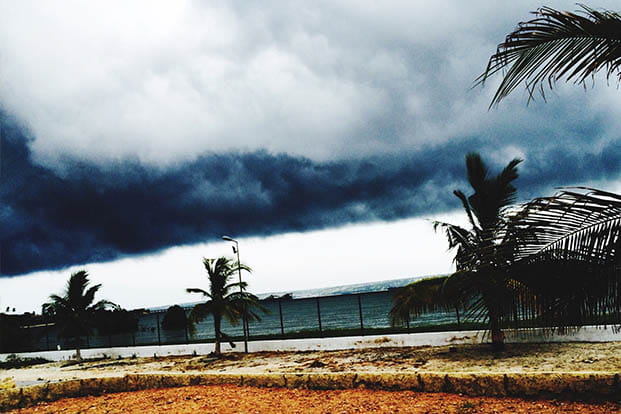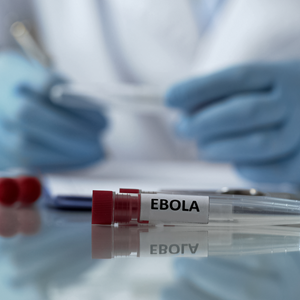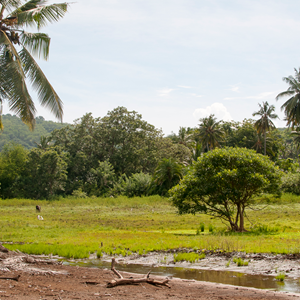
This month's health bulletin focuses on:
- The aftermath of the tropical cyclone in Mozambique
- The ongoing Ebola outbreak in the Democratic Republic of Congo
- The outbreak of Rift Valley Fever in Mayotte, France
Mozambique

The tropical cyclone that has devastated a 3,000 mile swathe of land across Mozambique and Zimbabwe, has left in its wake 230,000 displaced, and affected up to 1.85 million people. Thousands were stranded on roofs, as both crops and infrastructure were destroyed. As humanitarian companies assess the situation, many deem it as inevitable that disease will shortly follow. Diarrhoeal infections have already been reported in the camps inhabited by the population made homeless. Already over 1,000 cases of cholera have been reported. This common illness of deprivation and disaster produces a watery diarrhoea that can have fatal consequences should those affected not keep up their oral intake of fluids. As the dehydration worsens, organ failure can ensue with fatal consequences. Cholera is spread by the feco-oral route, meaning that when the drinking water supply becomes contaminated with the effluent from drains and latrines, the cholera-causing bacteria can infect humans. As can be imagined, this can easily happen in areas affected by floods.
Standing water left following a flood can present particular problems as they facilitate the propagation of mosquitoes. Several very important diseases are spread by mosquitoes. Malaria, for example, is already endemic in Mozambique but the number of cases is expected to increase rapidly in the coming weeks. Malaria is carried by the Anopheles mosquito, but a range of other diseases are spread by the Aedes species of mosquito – such as Dengue fever, chikungunya and the Zika virus. Mozambique has produced many cases of such diseases, especially dengue and chikungunya. As both produce a flu-like illness, they can be difficult to tell apart. However, in the case of chikungunya, a particularly nasty joint pain can occur that gives the derivation of its name in the Makonde language, often translated as ‘that which bends up’ or more simply, ‘to become contorted’. Indeed, sufferers can have long-lasting joint pain and deformity, affecting the rest of their lives.
For the humanitarian workers assisting the Mozambique government during this crisis, protecting themselves against these diseases is essential if they are to remain effective. Preparation before the workers travel to disaster areas is crucial, including receiving vaccinations against cholera and typhoid. Drinking purified water whilst in the field is usually managed by the instigation of water purification units able to deliver high volumes of safe water for the whole team. The regular use of insect repellent sprays is important to reduce the likelihood of being bitten by mosquitoes, but for malaria, it remains necessary to take anti-malarial medication. As the incidence of severe malaria is highest in individuals from countries not usually affected by malaria, humanitarian workers are at particular risk of complications should they become infected. For local populations, who have been exposed to the disease since birth, a partial immunity to malaria can develop, affording them some protection when they become infected. However, for those travelling to Mozambique from colder climates, such partial immunity is not possible, and complications like the often fatal cerebral malaria - where the brain becomes infected - is much more likely. Taking anti-malarials is essential.
It is not only to disease that humanitarian aid workers are subject. An increase in crime, including assaults, is well known to occur. Added to this is the psychological trauma that often occurs whilst caring for a population so devastated. As ever, caring for the carers is an important but often forgotten necessity
Democratic Republic of Congo (DRC)

Over a 1,100 people have now become infected with the Ebola virus in Eastern Democratic Republic of Congo, DRC’s 10th outbreak. As the number of fatalities approaches 700, there is little sign of this epidemic becoming under control: although a few successes have been demonstrated in some affected towns, new centres of Ebola infection have now arisen.
A recent report has highlighted how the beliefs of the local population may be hindering the efforts to control the epidemic. Around 25% of individuals in the DRC are said to not believe that Ebola is real. Clearly, if you don’t believe that Ebola is real, then attempts to control the outbreak, such as by the use of vaccination, will be refused and mistrusted. Other measures to stop the transmission of the virus, such as by the practice of ‘safe and dignified’ burials of deceased Ebola patients, will likewise be declined and misunderstood - as has been highlighted in previous epidemics of Ebola, local burial rites where ritual cleaning of the highly infectious corpse occurs, have fuelled further cases of the disease.
Such mistrust and misunderstanding is to be expected, of course, as there is often a conflict between the world views of the local population and the healthcare agencies on the ground. It’s why anthropologists are being used to make the initial contact with new local populations affected by Ebola; listening to concerns, and brokering improved relationships between healthcare workers and the local people. What is clear is that without trust, there cannot be community engagement and effective control of the outbreak.
In addition to the conflict of the world views, there is the continued conflicts from the local militia groups – five Ebola treatment centres have been attacked in the last few weeks. With these multiple aggravating factors still present, this outbreak is set to continue for the foreseeable future.
France, Mayotte

The archipelago of Mayotte is currently experiencing an outbreak of Rift Valley Fever. Officially a department of France but located between Madagascar and Mozambique, the idyllic island has now seen over one hundred cases of this viral infection. Although most cases of human infection can be mild, in some individuals a meningitis-like illness can develop, and in others, uncontrolled bleeding. Rift Valley fever is usually a disease of animals – 60 animals have been found to be infected during this outbreak at present. However, the virus can cross over to humans following close contact with infected animals. Furthermore, if mosquitoes bite an infected animal, they can become infected and go on to transmit the disease to humans. Fortunately, no human to human transmission has been reported with Rift Valley fever. Control measures are therefore centred around culling infected animals, reducing mosquito populations, and taking mosquito bite precautions.
Rift Valley Fever
- One of the Viral Haemorrhagic Fevers
- Transmitted by close contact with infected animals, and mosquitoes
- Most humans have few symptoms but severe disease can occur
- No specific treatment as yet
- Control infected animals and mosquitoes; practise mosquito bite prevention.







